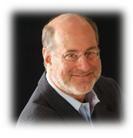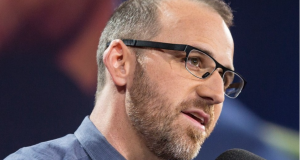Radio’s Most Innovative will continue in the JacoBLOG, but will move from a fixed Friday feature to one that reoccurs throughout the course of the year. Mixed into our Friday posts will be a new “Guest List” column, written by various contributors with something interesting to say.
In our first “Guest List” column, Amplifi Media’s Steve Goldstein takes on an issue that’s on the minds of a lot of radio people. Making sense out of the podcasting challenge and opportunity is a big topic – something that Steve also discussed at our DASH Conference yesterday. Enjoy. – FJ
 Digital content is radio’s present and future. Much like television where more and more people are consuming video via YouTube, Netflix and DVRs, many are listening to audio at a time of their choosing.
Digital content is radio’s present and future. Much like television where more and more people are consuming video via YouTube, Netflix and DVRs, many are listening to audio at a time of their choosing.
TV has seen a decline in viewing as people self-curate, using their smartphones and other digital devices. Radio is experiencing a similar arc of change. Largely driven by Millennials, podcasting has grown to 32 million listeners every week. For some context, that’s more than NPR’s 30 million weekly over-the-air listeners.
The trend to on-demand is immutable. People want to select what they want to listen to, where they want to listen, and when. More than ever, they are agnostic to the device – radio, smartphone, desktop – it’s all fair game. It’s all audio.
But podcasts, while a natural extension for radio broadcasters, are inherently different than radio in some important ways. Here are six of them.
1. Radio is lean back. Podcasts are lean-forward.
Radio is great at curation – putting together a sportscast, sequencing music, generating newscasts with correspondents from all over the world. Push the button and radio does it all. Podcasts, on the other hand, are “opt-in.” Consumers must find and then choose to download a podcast. The intent is very different.
2. On radio, the show is always “on.” Podcasts start at the beginning.
With radio, by definition, the content just flows in real time, and is always “on.” People tune in and tune out all of the time. They either like what they are hearing or move on, often within mere seconds. In podcasting, everyone has the common experience of starting at the beginning. Which, of course, is no guarantee that the content will keep them engaged.
3. On radio, the clock is always ticking. Podcasts are free from time constraints.
With radio, the clock is often critically important, whether it means hitting a commercial break, backtiming out to news, or moving on to another program. With podcasts, you can throw out the conventional thinking. There is no magical length. Roman Mars (pictured right) who hosts the successful “99% Invisible” podcast says that he goes until he is done. Some great podcasts run 21 minutes, others run 58. Without time constraints, for example, an interview can occur at a more leisurely pace.
4. Radio must appeal to wide audience. Podcasts can focus on niches.
Radio is largely driven by ratings. Niche and narrow formats and shows tend not to sustain. Podcasts can focus on more specific, granular subjects, whether it’s health, food, World Cup Soccer, fantasy sports, or fly fishing. They tend to attract a more engaged audience.
5. Radio is a button push away. Podcasting requires opt-in.
Radio listening is ubiquitous and easy: punch the button and the experience starts. Podcasting has more friction. People must find, select and in most cases, download a program. The hurdle is higher. But so is the listener engagement.
6. Radio content is perishable. Podcasting content is always available.
For the most part, radio is live. You either catch the content in progress or it is on its way to the dwarf planet Pluto, never to be heard again. Podcast audio is available on demand. Always at the ready.
Audio content creators need to be aware that traditional radio and podcasting are more than just different distribution technologies. While they share much common DNA, they are in many ways two different media — each with their own unique idiosyncrasies. No two media are alike.
Contact Steve here: [email protected]
More Guest Lists
- Rob Naughton: 5 Pet Peeves of Production Directors
- Jade Springart: 5 Things Every Music Director Should Consider in the Music Meeting
- Jim Cutler: 5 Tips To Help Radio Turn Empty Imaging into Solid Content
- Jamie Michelson: 5 Reasons Why I’m Still Loyal To Radio
- Gary Shapiro: A Preview of CES 2018 From CTA’s Innovative CEO
- Can Radio Afford To Miss The Short Videos Boat? - April 22, 2025
- Media And Technology In 2025: Believe It Or Not! - April 18, 2025
- In Radio, You Just Never Know - April 17, 2025





Great post! What is the source for his declining TV viewership numbers and number of podcast listeners per week (i.e. Vs NPR)? I’m preparing a talk about podcasting for a marketing association and would like to cite those numbers.
Doug, thanks for the note. I’m going to let Steve respond regarding the metrics he quoted in the post. Thanks for taking the time to comment.
Doug,
Data on TV’s decline is all over. Here is one piece https://www.businessinsider.com/tv-ratings-decline-2015-9. NPR listening – pretty sure that is from Current.org. Edison Media has podcast weekly and monthly numbers. Hope that’s helpful!
Clicking “Agree!”
As a podcaster of nearly 10 years, I think this does a lovely job of pointning out creator-faced differences. You also hint at some important user-implications, too. To clarify:
In #1, Consumers must find podcasts – very true, but more and more difficult as NPR shows take up most of the “featured” space on iTunes and Stitcher. Consumers looking for a niche podcast (and relying on the notoriously lousy iTunes search algorithym) can’t find podcasts hidden behind the pro-casts. It changes the “lean-forward” to “slog-on”. Radio audio released digitally does not a podcast make. It’s still just digital radio. Podcast are—by nature and by your article above—a separate and niche-ier beast.
#2 – while it’s true that most listeners start at the beginning of each episode and listen through, some podcasters use chapter markers or time-codes to help listeners get to the bits they want. On my classic literature podcast, I routinely start each show with a brief announcement “Episode 401—end of “Sense and Sensibility.” Book talk begins at 4 minutes and 33 seconds” or something to that effect. It solves some of the engagement issues and is decidedly not something that a live radio stream can do.
#5 – I would have agreed until the last couple of years of iOS and Android app updates. Now I find it easier to listen to podcasts on my phone than it is to listen to the radio (not to mention shows like The Feed and CraftLit that have dedicated apps making it that much easier to listen). I live in an area where reception is split between two large cities (NYC and Philly) which equals dicey radio reception on a good day. Podcasts are always just a tap away-and reception isn’t an issue.
I can’t see either medium going away or changing much any time soon. When I can get radio, I listen to it. When I can’t – or when I’m ready for some niche-specific audio, I turn to podcasts. A lof of my listeners say the same.
And you?
Heather, these are great comments and observations from someone who is obviously on the front lines. I’m going to let Steve respond to the specific points you make, but I’d like to comment on your final observation. I believe you are spot on with your “take” that neither medium will disappear, finding consumers, environments, and situations that work in a given moment in time. The question is whether traditional broadcasters can get their collective heads around podcasting and create content that succeeds in this space. Thanks again for your thoughtful response to Steve’s post.
Hello Heather and Fred,
I agree with all of Heather’s observations, most especially that one media rarely replaces another, it just adds to consumer choice. And consumers like choice. Podcasting can be both niche and mass appeal. Discovery is a big challenge. That’s a giant problem.